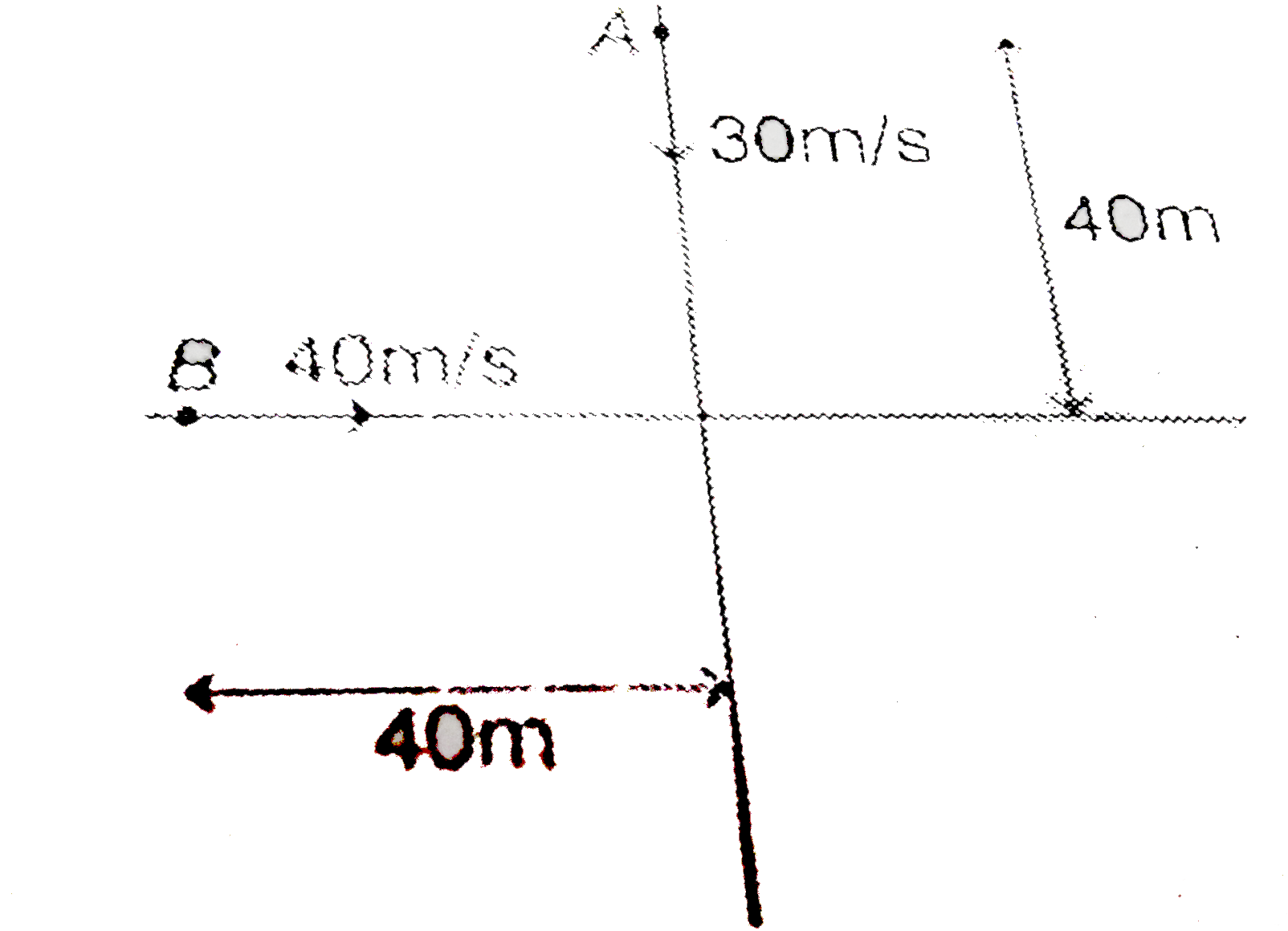A car travels from A to B and returns to its original position.
The distance between A and B is 2000 m.
When can the magnitude of distance and displacement be equal for a body in motion?
To solve the question, we need to understand the concepts of distance and displacement.
1. Understanding Distance and Displacement:
- Distance is the total path length traveled by an object, regardless of the direction.
- Displacement is the shortest straight-line distance from the initial position to the final position, along with the direction.
2. Analyzing the Journey from A to B:
- The car travels from point A to point B, covering a distance of 2000 m.
- During this journey, the displacement is also 2000 m because it is the straight-line distance from A to B.
3. Returning from B to A:
- When the car returns from B back to A, it again covers a distance of 2000 m.
- However, the displacement at this point is 0 m since the initial and final positions are the same (both at point A).
4. When are Distance and Displacement Equal?:
- The magnitude of distance and displacement can be equal when the object is moving in a straight line without changing direction.
- This occurs when the object has not returned to its starting point. For example, when the car is anywhere between A and B (including at B), both distance and displacement are equal to the distance traveled from A.
5. Conclusion:
- The magnitude of distance and displacement is equal when the car is moving from A to B or when it is at point B. However, once the car starts returning to A, the distance becomes greater than the displacement.
Final Answer:
The magnitude of distance and displacement can be equal when the body is moving in a straight line from the initial position to the final position without returning to the starting point. This is true for any point between A and B, and at point B itself.
- Distance is the total path length traveled by an object, regardless of the direction.
- Displacement is the shortest straight-line distance from the initial position to the final position, along with the direction.
- The car travels from point A to point B, covering a distance of 2000 m.
- During this journey, the displacement is also 2000 m because it is the straight-line distance from A to B.
- When the car returns from B back to A, it again covers a distance of 2000 m.
- However, the displacement at this point is 0 m since the initial and final positions are the same (both at point A).
- The magnitude of distance and displacement can be equal when the object is moving in a straight line without changing direction.
- This occurs when the object has not returned to its starting point. For example, when the car is anywhere between A and B (including at B), both distance and displacement are equal to the distance traveled from A.
- The magnitude of distance and displacement is equal when the car is moving from A to B or when it is at point B. However, once the car starts returning to A, the distance becomes greater than the displacement.
The magnitude of distance and displacement can be equal when the body is moving in a straight line from the initial position to the final position without returning to the starting point. This is true for any point between A and B, and at point B itself.
Topper's Solved these Questions
- BOOK - ICSECHAPTER - ICSE ANNUAL EXAMINATION -2020EXERCISE - SECTION-II45videos
ICSE ANNUAL EXAMINATION -2020
- BOOK - ICSECHAPTER - HEAT AND ENERGYEXERCISE - EXERCISE -6(D) Multiple Choice Question)4videos
HEAT AND ENERGY
- BOOK - ICSECHAPTER - LAWS OF MOTIONEXERCISE - EXERCISE - 3(E) (Numericals)31videos
LAWS OF MOTION
Similar Questions
A car travels from A to B and returns to its original position.
The distance between A and B is 2000 m.
Find the total displacement of the car.View SolutionA car travels from A to B and returns to its original position.
The distance between A and B is 2000 m.
The car takes 5 min to travel from A to B but takes 8 min to travel back from B to A. Is the speed of the car greater while going from A to B or while travelling back from B to A?View SolutionWhen is the magnitude of displacement equal to the distance ?
View SolutionIn which of the following cases of motions, the distance moved and the magnitude of displacement are equal ?
View SolutionFind the distance between origin and the point (a, -b).
View SolutionA car moves from O to D along the path OABCD shown in fig.
What is distance travelled and net displacement.View SolutionTwo cars started simultaneously towards each other from towns A and B which are 480 km apart.It took first car travelling from A to B 8 hours to cover the distance and second car travelling form B to A in 12 hours.Determine when do the car meet after starting and at what distance from town A.Assuming that both the cars travelled with constant speed.
View SolutionA particle starts from the origin, goes along the X-axis to the point (20m, 0) and then returns along the same line to the point (-20m,0). Find the distance and displacement of the particle during the trip.
View SolutionA harmonic wave is travelling on a stretched string . At any particular instant , the smallest distance between two particles having same displacement , equal to half of amplitude is 8cm. Find the smallest separation between two particles which have same values of displacement (magnitude only) equal to half of amplitude.
View SolutionTwo bodies A and B are moving along y-axis and x -axis as shown. Find the minimum distance between A and B is subsequent motion (in m)
 View Solution
View Solution
